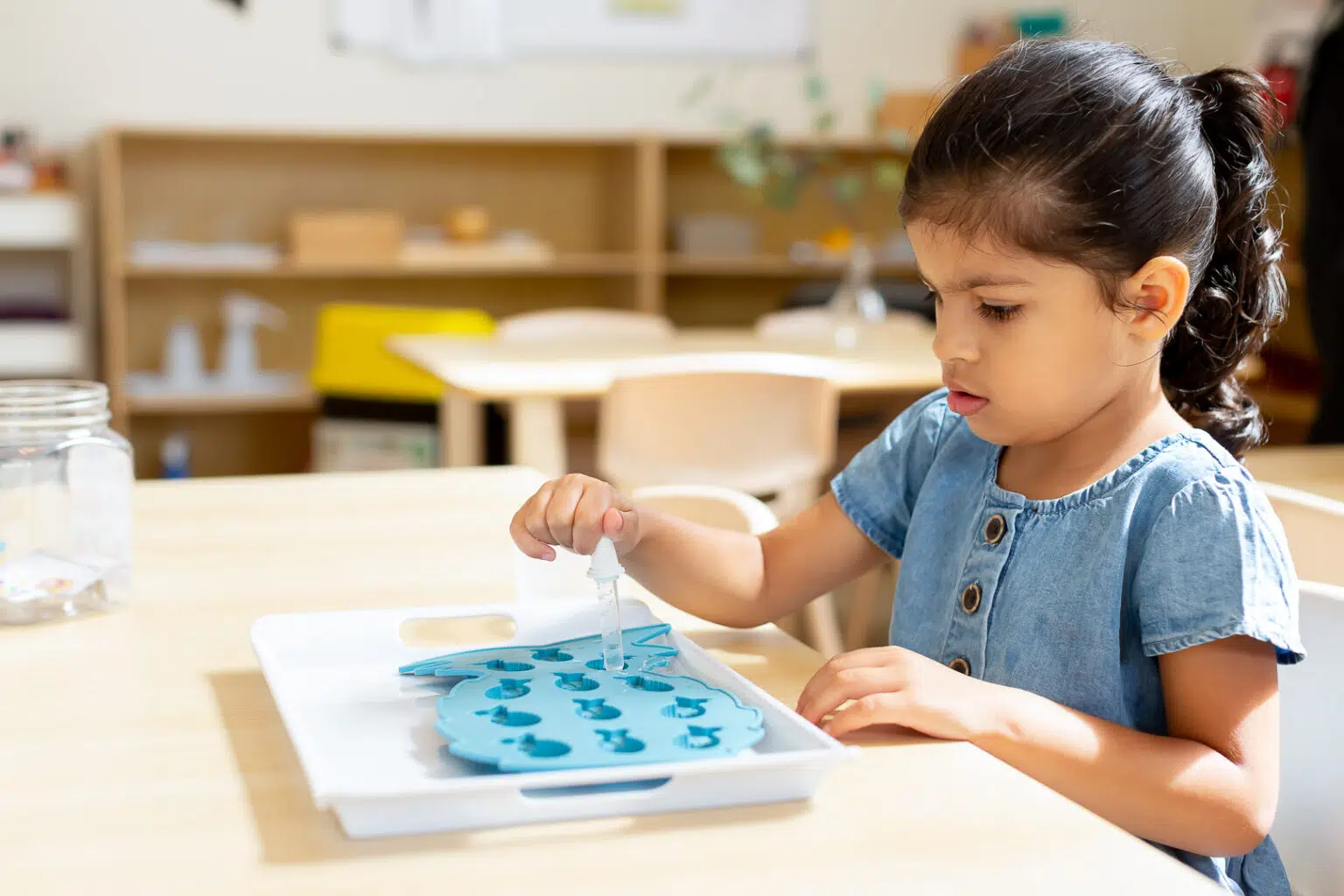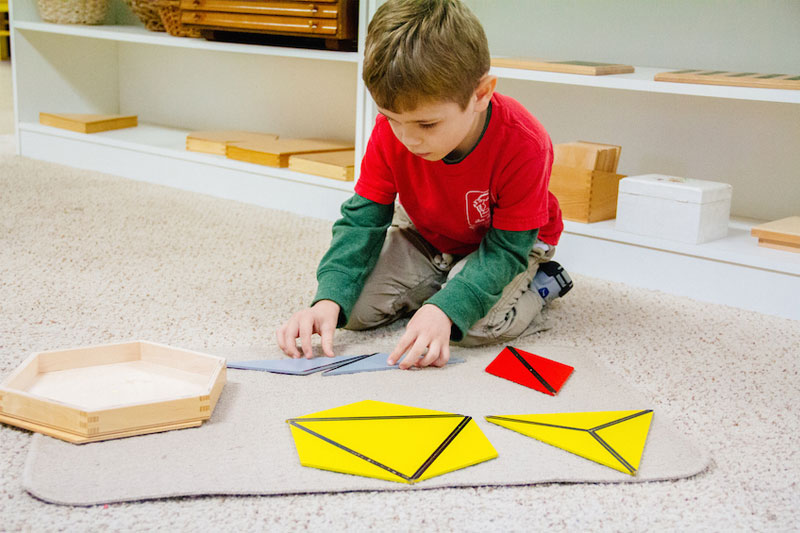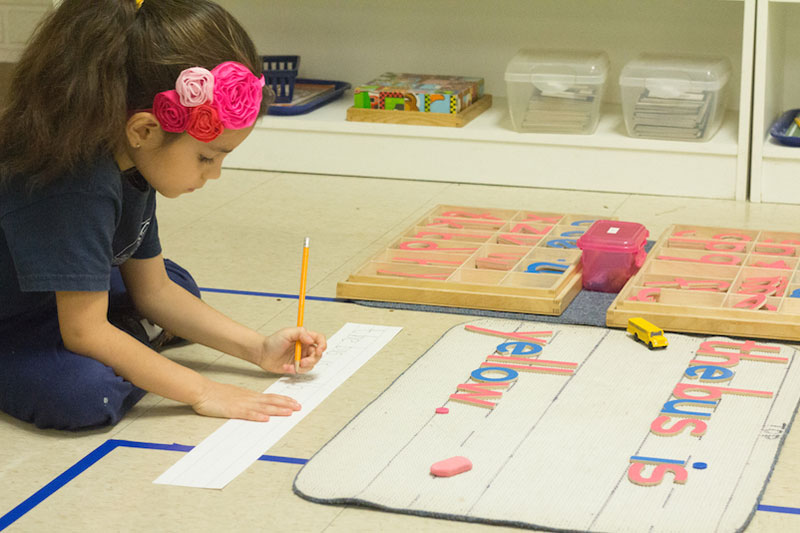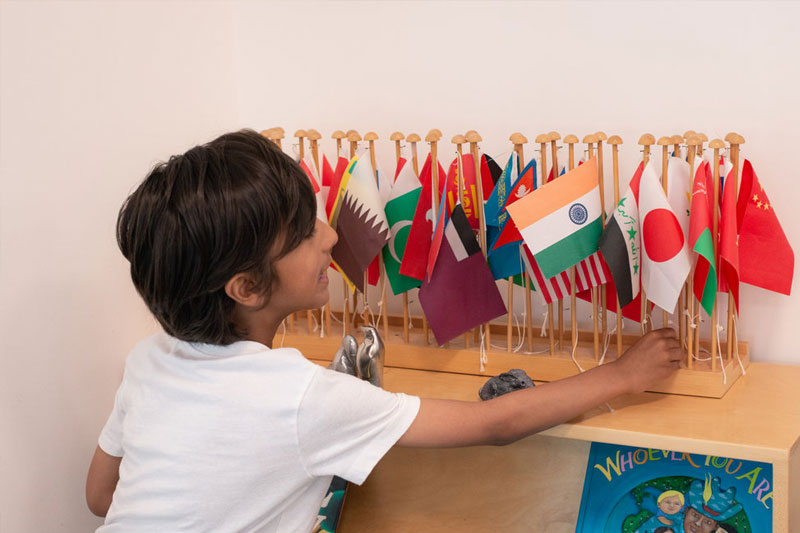CURRICULUM @ IIS
Ideal Montessori School
The Five Areas of the Montessori Curriculum

1. Practical Life
By doing practical life activities, the child can develop a high level of concentration, a sense of order, take pride in completing a job, increase independence, develop respect for his or her community and surroundings, and improve fine motor skills.
Example materials and activities include:
- Spooning
- Tonging
- Threading
- Sweeping
2. Sensorial
Sensorial activities are used in Montessori learning to help children in discrimination and order. They also help broaden and refine a child’s senses. When a Montessori designed materials combine with sensorial work, it helps them to become more logical, perceptive, and aware.
Example materials and activities include:
- Pink Tower
- Colour Box
- Geometric Solids
- Trinomial Cube


3. Language
Communication allows the child to express her needs and ideas to others. Through language we are able to cooperate, collaborate, receive knowledge and pass knowledge to others.Students use language materials to explore letters, sounds, handwriting, and eventually spelling and writing.
Example materials and activities include:
- Sandpaper Letters
- Moveable Alphabet
- Metal Insets
- Three Part Cards
4. Mathematics
Montessori math materials help children approach math with hands-on, visual, and physical learning aids. These materials allow students to attain concrete knowledge to the often abstract concepts in math.
Example materials and activities include:
- Numerals and Counters
- Hanging Bead Stair
- Teen Boards
- Hundred Board


5. Cultural
Communication allows the child to express her needs and ideas to others. Through language we are able to cooperate, collaborate, receive knowledge and pass knowledge to others.Students use language materials to explore letters, sounds, handwriting, and eventually spelling and writing.
Example materials and activities include:
- Land and Water Forms
- Continent Boxes
- Life Cycle Puzzle and Activities
- Map Cabinet




